Recognizing Autism in Teen Years
Autism Spectrum Disorder (ASD) presents distinct social, communication, and behavioral challenges that evolve as children grow into adolescence. Identifying signs in teens is crucial for timely support and effective intervention, enhancing their quality of life and social integration. This article explores the characteristic signs and symptoms of autism in teenagers, detailing the social difficulties, repetitive behaviors, sensory sensitivities, and therapeutic strategies, with a focus on Applied Behavior Analysis (ABA) therapy and its role in adolescent support.
Core Social and Communication Challenges in Teens with Autism
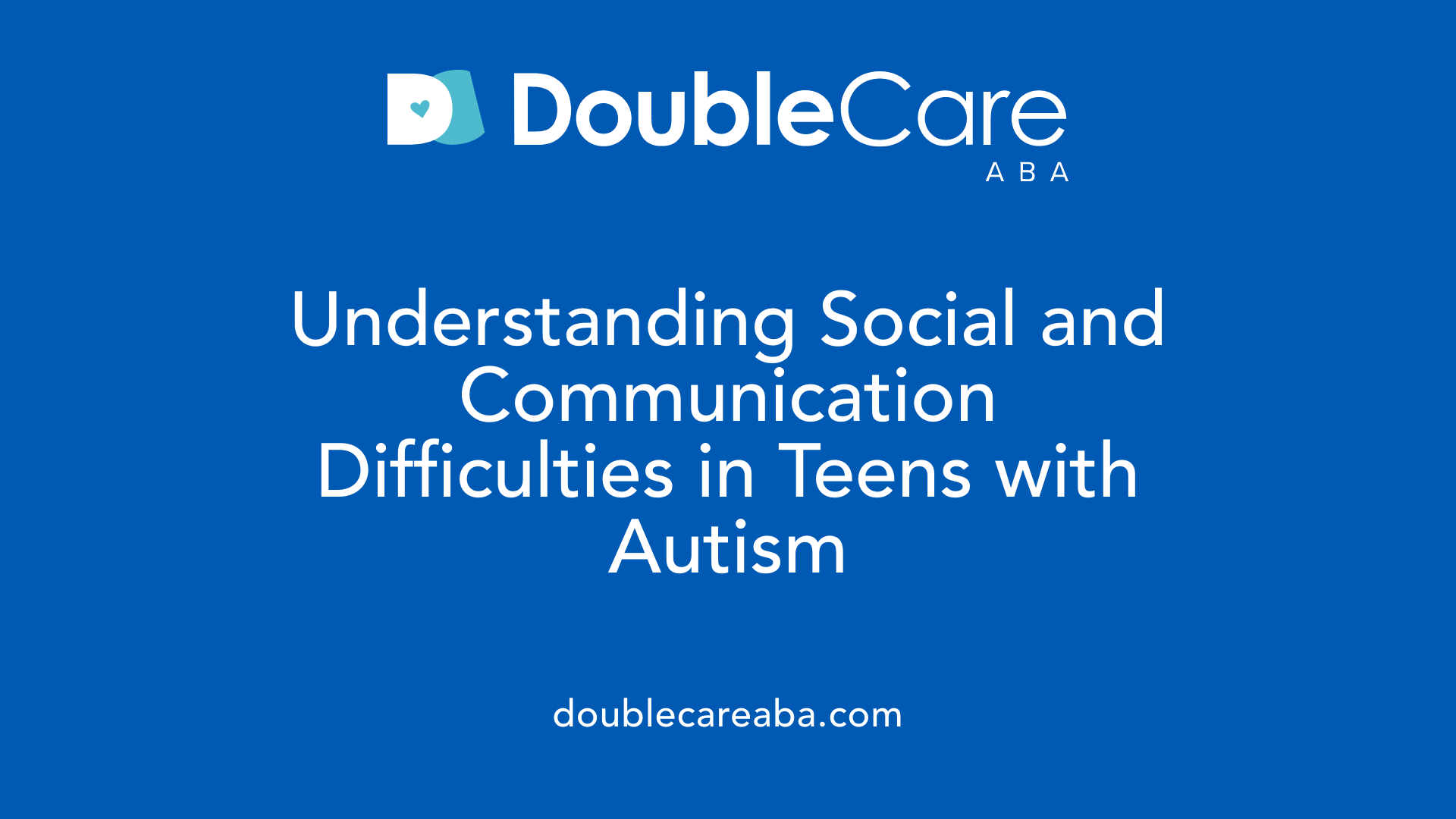
Social Interaction Difficulties
Teens with autism often face significant challenges in social interaction. These difficulties include trouble initiating and maintaining conversations, sharing interests or emotions with others, and understanding social boundaries. This may lead to feeling overwhelmed in social situations and struggling to form or maintain friendships.
Communication Challenges
Communication for adolescents with autism can be marked by one-sided conversations focused on narrow topics. They may experience challenges in expressing their thoughts or emotions clearly, using alternative communication methods, or regulating their tone of voice to suit social contexts.
Understanding Social Cues
A core challenge lies in interpreting body language, facial expressions, sarcasm, and other nonverbal cues. This impairment can result in misunderstandings and difficulty responding appropriately in social settings, which can heighten feelings of frustration.
Emotional Expression
Many teens with autism struggle to convey their feelings outwardly and to read the emotions of others, which can lead to misunderstandings in relationships. Emotional regulation challenges may also cause meltdowns or shutdowns, particularly when routines are disrupted or in overwhelming environments.
Impact on Peer Relationships
Together, these social and communication difficulties can impair peer relationships. Teens may experience social isolation, difficulty making friends, and anxiety linked to social interactions. Speech-language therapy and structured interventions like Applied Behavior Analysis (ABA) can equip teens with coping strategies, better communication skills, and emotional resilience to improve these relationships.
Restricted and Repetitive Behaviors Typical in Autistic Teenagers
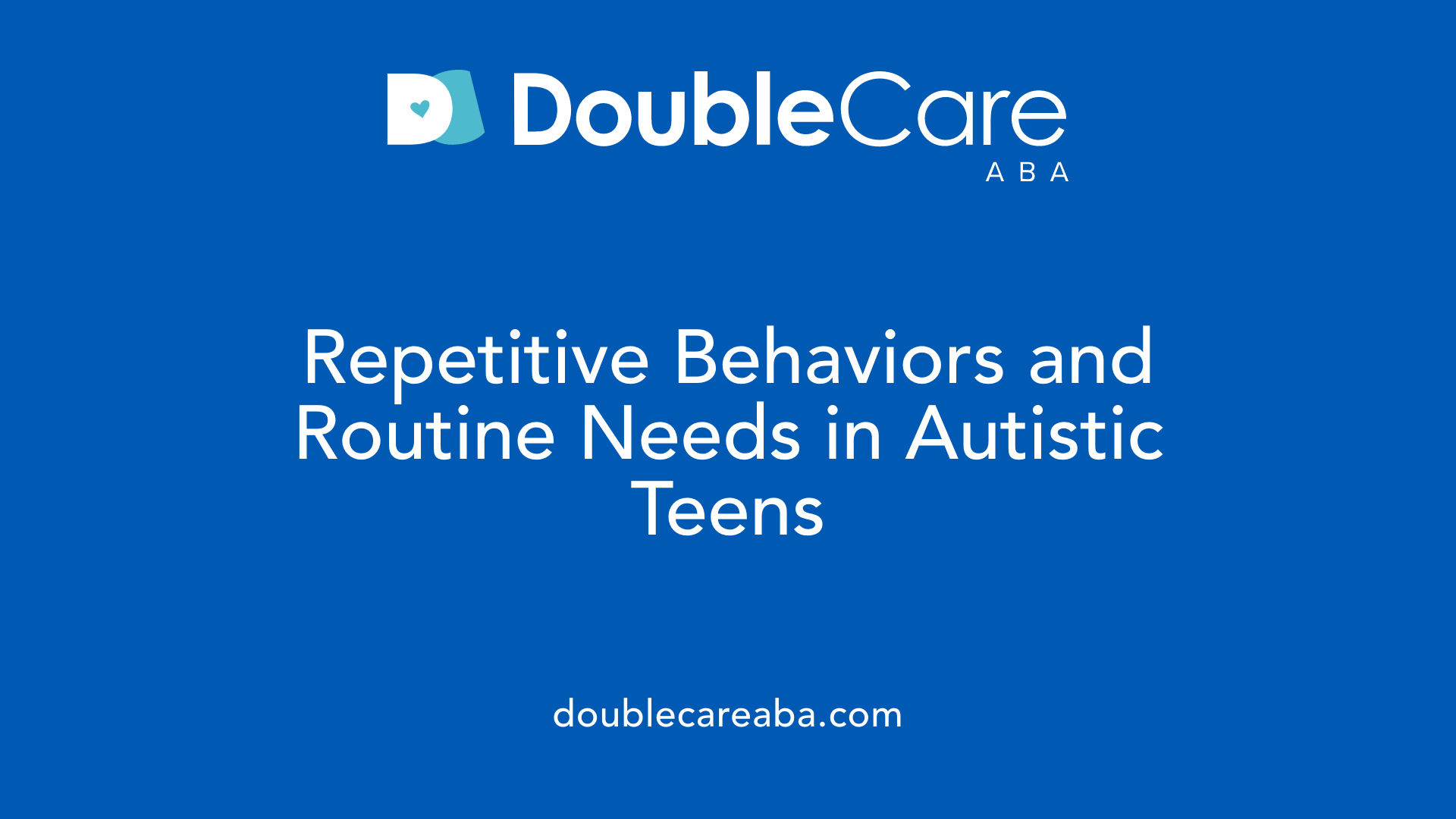
What Are Common Repetitive Movements in Autistic Teenagers?
Many autistic teenagers display repetitive movements such as rocking or hand flapping. These behaviors may serve as self-soothing mechanisms or ways to cope with overwhelming situations.
How Do Rigid Thinking Patterns Affect Teenagers with Autism?
Rigid thinking patterns often manifest as strict adherence to rules or difficulty adapting to new ideas. This can make the teenage years challenging, especially when faced with novel social or academic demands.
Why Is a Need for Routine Important?
A strong preference for routine helps autistic teens feel secure and manage anxiety. Changes in daily schedules or unexpected events can be very distressing and are often difficult for them to handle.
How Does Emotional Dysregulation Result from Change?
Disruptions to routine or sensory overload can trigger emotional dysregulation, leading to meltdowns or behavioral outbursts. This response is a way for the teenager to express frustration or overwhelm when their coping strategies are overwhelmed.
What Are Sensory Sensitivities in Autistic Adolescents?
Sensory sensitivities are common and include heightened or reduced sensitivity to sounds, lights, textures, or other sensory inputs. These sensitivities can interfere with everyday functioning, making environments like noisy classrooms or crowded places stressful.
To support autistic teenagers, understanding these behaviors and sensitivities is crucial. Structured interventions, such as Applied Behavior Analysis (ABA), can teach coping skills and help adolescents manage their responses to change and sensory input effectively.
Emotional Regulation Difficulties in Adolescents on the Spectrum

What challenges do adolescents with autism face in managing emotions?
Adolescents with autism often struggle with emotional regulation. This can manifest as difficulty managing strong feelings such as anxiety, frustration, or overwhelm. These challenges may arise because autistic teens find it tough to interpret social cues and express their thoughts or emotions clearly.
What are meltdowns and shutdowns in autism?
Meltdowns and shutdowns are behaviors that result from overwhelming emotional experiences. A meltdown is a more outward display of distress, such as crying or yelling, while a shutdown involves withdrawal or lack of response. Both are common responses to situations where emotions become too difficult to manage.
How do anxiety and frustration affect autistic teens?
Anxiety and frustration are frequent emotional responses for autistic teenagers. These feelings can arise from struggles with social interactions, sensory sensitivities, or unexpected changes in routine. Persistent anxiety may contribute to challenges in peer relationships and daily activities.
How do emotional difficulties impact daily functioning?
Difficulties with emotional regulation can affect a teen’s ability to engage in school, social events, and family life. Emotional overload may lead to behavioral outbursts or withdrawal, interfering with learning and forming relationships.
What coping mechanisms help autistic adolescents regulate emotions?
Therapies like Applied Behavior Analysis (ABA) offer structured strategies to build coping skills, improve executive function, and promote adaptive behaviors. Speech-language therapy can assist teens in developing practical communication techniques to express emotions constructively and build resilience. Identifying emotional triggers and reinforcing positive responses are important components of effective support.
These approaches help adolescents on the spectrum to better understand themselves and interact more meaningfully with others.
How Autism Manifests Differently with Age: From Childhood to Teen Years

What are the early signs of autism compared to adolescent signs?
In young children, early signs of autism often include limited eye contact, not responding to their name, a preference for playing alone, repetitive motions or speech like hand flapping or echolalia, and difficulty with social interactions such as not following gaze. Toddlers and preschoolers might also show speech delays and sensory sensitivities.
As children grow into adolescence, signs evolve. Teens with autism may have trouble understanding sarcasm, making little eye contact, or struggle with forming and maintaining relationships. They often engage in one-sided conversations and have difficulties reading social cues. Repetitive behaviors and a strong need for routine remain common.
How do social challenges change from childhood to adolescence?
Social difficulties typically become more pronounced during the teenage years. While younger children might avoid peers or have trouble sharing interests, adolescents often face increased challenges interpreting nonverbal cues and expressing emotions. This can lead to frustration, anxiety, and difficulties in peer relationships. Emotional regulation issues may also intensify, sometimes resulting in meltdowns or shutdowns.
What is camouflaging in teens, especially girls, and how does it affect diagnosis?
Camouflaging refers to behaviors that mask or hide autism symptoms, and it is especially common among adolescent girls. Teens might imitate social behaviors to fit in, suppress repetitive behaviors, or mimic peers' expressions, making symptoms less obvious. This often leads to underdiagnosis or delayed diagnosis in girls. Camouflaging can increase stress and anxiety, complicating both identification and support.
What common comorbidities are seen during adolescence?
Mood disorders, anxiety, ADHD, and depression frequently co-occur with autism during adolescence. These conditions can mask or overlap with autism symptoms, posing additional challenges for diagnosis and treatment. Emotional difficulties often accompany sensory sensitivities and executive functioning challenges in this age group.
Understanding how autism symptoms shift from childhood into adolescence, alongside factors like camouflaging and comorbidities, is vital for timely diagnosis and tailored support. Early intervention remains crucial to enhancing social skills, communication, and emotional wellbeing throughout development.
Diagnosis of Autism in Teens: Assessment Tools and Challenges
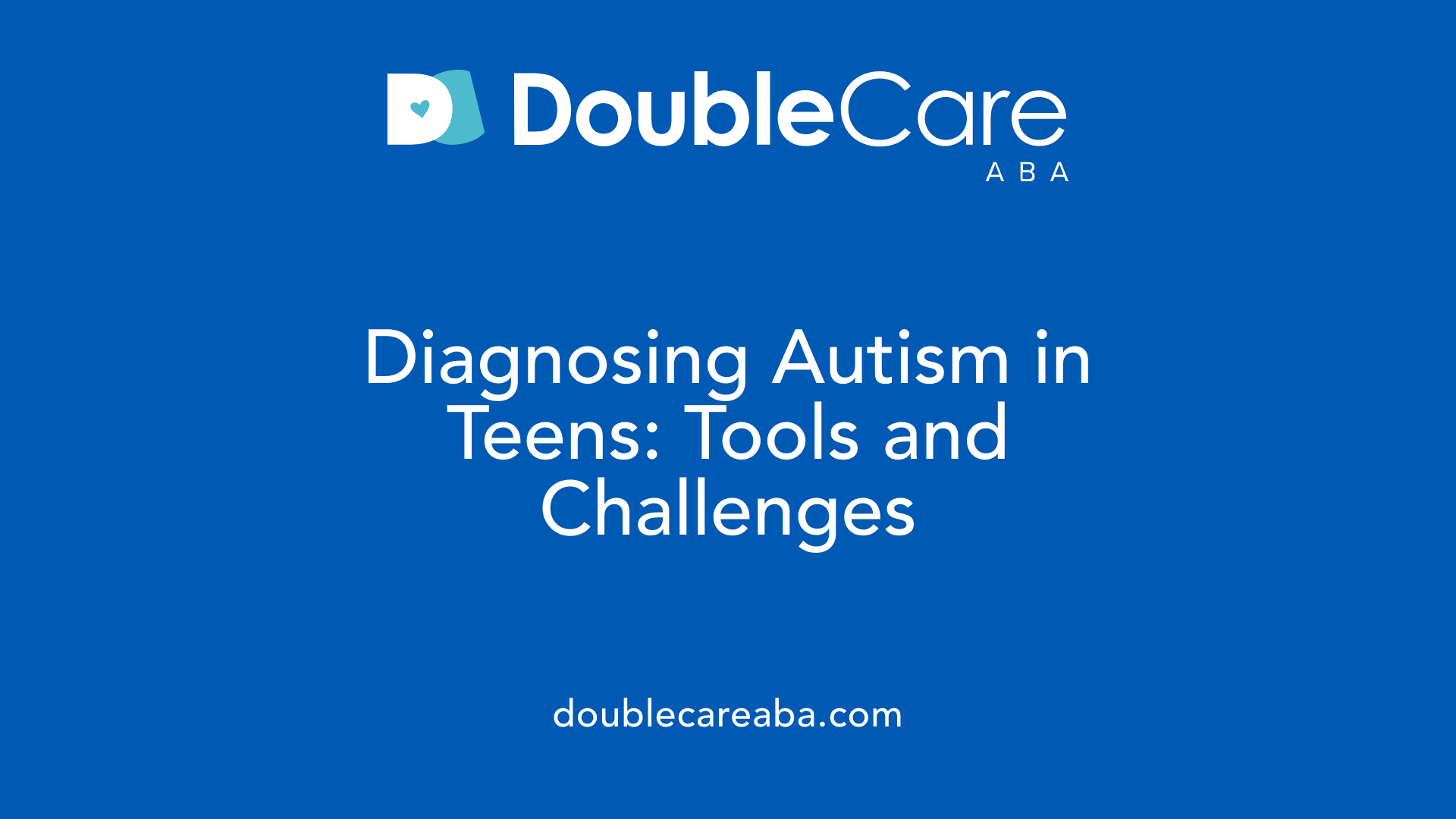
What Are the Diagnostic Criteria for Autism in Teens?
Diagnosis of autism spectrum disorder (ASD) in adolescents relies on identifying two main features: persistent deficits in social communication and interaction, and the presence of restricted, repetitive behaviors. These criteria align with the DSM-5-TR guidelines and emphasize ongoing challenges in social skills along with specific behavioral patterns.
Which Tools Are Used in Assessing Autism in Adolescents?
Clinicians use standardized assessment instruments such as the Autism Diagnostic Observation Schedule, Second Edition (ADOS-2) and the Autism Diagnostic Interview-Revised (ADI-R) to aid in diagnosis. These tools provide structured observation and detailed developmental history, helping to identify core autism features consistently across varied presentations.
How Do Multidisciplinary Evaluations Support Diagnosis?
A thorough autism evaluation in teens typically involves a multidisciplinary team including psychologists, developmental pediatricians, and Board Certified Behavior Analysts (BCBAs). This comprehensive approach integrates observations, developmental history, behavior assessments, and input from caregivers to form a holistic understanding of the adolescent's strengths and challenges.
What Diagnostic Challenges Arise Due to Symptom Masking?
Many adolescents, particularly girls, engage in camouflaging behaviors that mask classic autism symptoms. This masking can obscure difficulties in social communication and complicate diagnosis, often leading to delayed or missed identification. Masking is also linked to increased anxiety and mental health stress.
How Do Mental Health Comorbidities Affect Diagnosis?
Co-occurring conditions such as mood disorders, attention-deficit/hyperactivity disorder (ADHD), and anxiety are common in autistic teens and can complicate the diagnostic picture. Care teams must differentiate between autism symptoms and other mental health issues, ensuring accurate diagnosis and tailored support.
Applied Behavior Analysis (ABA) Therapy: Foundations and Key Techniques

What is Applied Behavior Analysis (ABA) therapy and how is it used to support individuals with autism?
Applied Behavior Analysis (ABA) therapy is a scientifically backed approach focused on helping individuals with autism develop vital skills and reduce behaviors that may be disruptive or challenging. It uses the principles of operant conditioning, which involves reinforcing behaviors to increase their occurrence.
Principles of Operant Conditioning in ABA
At its core, ABA relies on operant conditioning, a theory developed by B.F. Skinner. This principle states that behaviors followed by positive outcomes or rewards are more likely to be repeated. ABA identifies specific behaviors to target and encourages those behaviors through positive reinforcement.
Key Techniques in ABA
Positive Reinforcement: Desired behaviors are immediately rewarded with praise, tokens, or other incentives to encourage repetition.
Discrete Trial Training (DTT): This is a structured teaching method that breaks down skills into small, manageable steps. Each step is taught systematically with prompts and rewards to reinforce learning.
Prompting and Fading: Prompts guide the individual towards correct responses, which are gradually reduced as learning occurs.
Functional Behavioral Assessments: These analyze the reasons behind challenging behaviors to help design effective strategies.
Individualized, Data-Driven Intervention
ABA programs are highly personalized to meet each individual’s unique needs. Continuous data is collected during therapy sessions to monitor progress, making it possible to adjust interventions for maximum effectiveness.
Role of Board Certified Behavior Analysts (BCBAs)
Board Certified Behavior Analysts are professionals trained to design, implement, and supervise ABA programs. They assess the individual’s skills and challenges, develop customized treatment plans, and train caregivers or other therapists to maintain consistency across settings.
Overall, ABA therapy aims to foster meaningful skill development, improve communication, enhance social interactions, and support independence. When started early and maintained consistently, ABA has been shown to produce significant improvements and a better quality of life for individuals on the autism spectrum.
Main Goals of Behavioral Therapy in Supporting Teens with Autism

What are the main goals of behavioral therapy for autism?
Behavioral therapy for autism primarily aims to improve communication skills, enhance social interactions, reduce challenging behaviors, and promote independence in daily activities.
Applied Behavior Analysis (ABA) is a common behavioral approach that utilizes techniques like positive reinforcement, discrete trial training, and pivotal response training. These methods help break complex skills into manageable steps, teach functional behaviors, and encourage adaptive responses.
Specifically, improving communication helps teens express their needs and understand others better, which is crucial since autism often affects social interaction and verbal skills. Enhancing social skills enables them to navigate peer relationships, interpret social cues, and reduce feelings of isolation or anxiety.
Reducing challenging behaviors, such as repetitive movements or emotional outbursts, makes daily life smoother and less stressful for individuals and their families. Promoting daily living independence, including self-care and organizational skills, supports their ability to manage routines and increases autonomy.
Early and intensive interventions have shown greater benefits, enabling significant improvements in language, social, and cognitive development. Starting therapy early, ideally before age three, and maintaining consistent support can maximize positive outcomes.
Behavioral therapy ultimately strives to support teens with autism in gaining practical life skills, improving emotional regulation, and enhancing overall quality of life.
The Professionals Behind ABA Therapy: Qualifications and Roles

Who typically provides ABA therapy and what qualifications do these professionals have?
Applied Behavior Analysis (ABA) therapy is administered by a team of trained professionals, most notably Board Certified Behavior Analysts (BCBAs) and Registered Behavior Technicians (RBTs). BCBAs are highly qualified experts who generally hold a master’s degree or higher in behavior analysis or related fields. They must pass a rigorous certification exam governed by the Behavior Analyst Certification Board (BACB), ensuring their expertise in designing and overseeing treatment plans.
RBTs typically support therapy delivery by implementing ABA techniques under the close supervision of BCBAs. Although RBTs usually have less formal education than BCBAs, they receive specialized training and certification to apply behavior analyst protocols effectively.
Education and certification requirements
- Board Certified Behavior Analysts (BCBAs): Hold at least a master’s degree, complete required coursework in behavior analysis, accumulate supervised practical experience, and pass the BACB certification exam.
- Registered Behavior Technicians (RBTs): Complete a specific training program, pass a certification exam, and operate under BCBA supervision.
Treatment plan design and supervision
BCBAs lead comprehensive assessments to develop individualized ABA treatment plans tailored for each client’s needs. These plans focus on improving communication, social skills, adaptive behaviors, and reducing problematic behaviors. BCBAs also monitor progress through ongoing data collection and adjust interventions accordingly.
RBTs and other therapists follow the prescribed treatment strategies, providing direct therapy sessions and reporting on client progress to supervising BCBAs.
Importance of professional ethics
Ethical practice is central to ABA therapy. Both BCBAs and RBTs adhere to standards set by the BACB, which emphasize client dignity, informed consent, confidentiality, and evidence-based treatment approaches. This professional integrity ensures that therapy outcomes are positive and respect the individual needs of those receiving support.
By working together, these qualified professionals provide structured, scientifically grounded, and compassionate care essential for effective ABA therapy.
Distinctive Features of ABA Therapy Compared to Other Autism Interventions
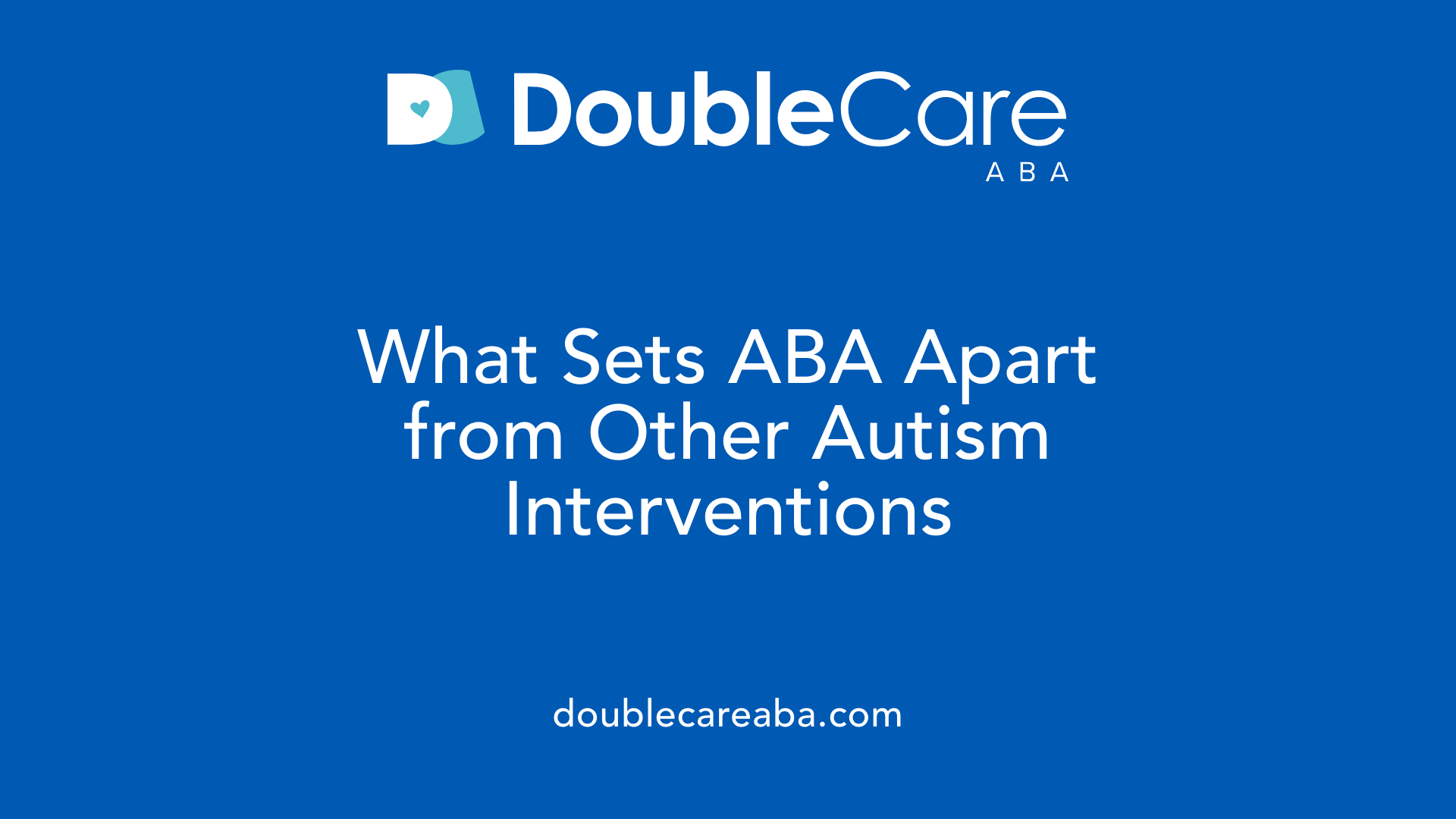
How does ABA therapy differ from other therapeutic approaches for autism?
Applied Behavior Analysis (ABA) therapy is unique among autism interventions due to its focus on data-driven behavior modification grounded in operant conditioning principles. Developed from the work of B.F. Skinner, ABA uses systematic observation and measurement to shape behaviors through positive reinforcement.
This means ABA targets observable skills like communication, social interaction, and adaptive behaviors. Therapists design individualized plans featuring intensive, one-on-one sessions where desired behaviors are encouraged and undesired behaviors are reduced.
Unlike Cognitive Behavioral Therapy (CBT), which focuses on understanding and managing emotions and thought patterns, ABA emphasizes modifying physical behaviors by changing the environment and consequences to promote learning. ABA also distinctively applies scientific methods to monitor progress continuously and adjust interventions.
The individualized nature of ABA allows it to be tailored to the specific needs and abilities of each person with autism. These interventions often take place across multiple settings such as home, school, or clinics and require trained specialists like Board Certified Behavior Analysts (BCBAs) for implementation.
While several therapies for autism address emotional regulation, sensory sensitivities, or social skills indirectly, ABA’s defining trait remains its structured approach to improving functional, measurable behaviors through reinforcement techniques backed by extensive research evidence.
This evidence-based, systematic method stands out from other approaches that may rely more on dialogue or developmental techniques, making ABA a cornerstone treatment for enhancing communication, self-care, and social skills in individuals with autism.
Sensory Sensitivities and Their Impact on Teen Functioning
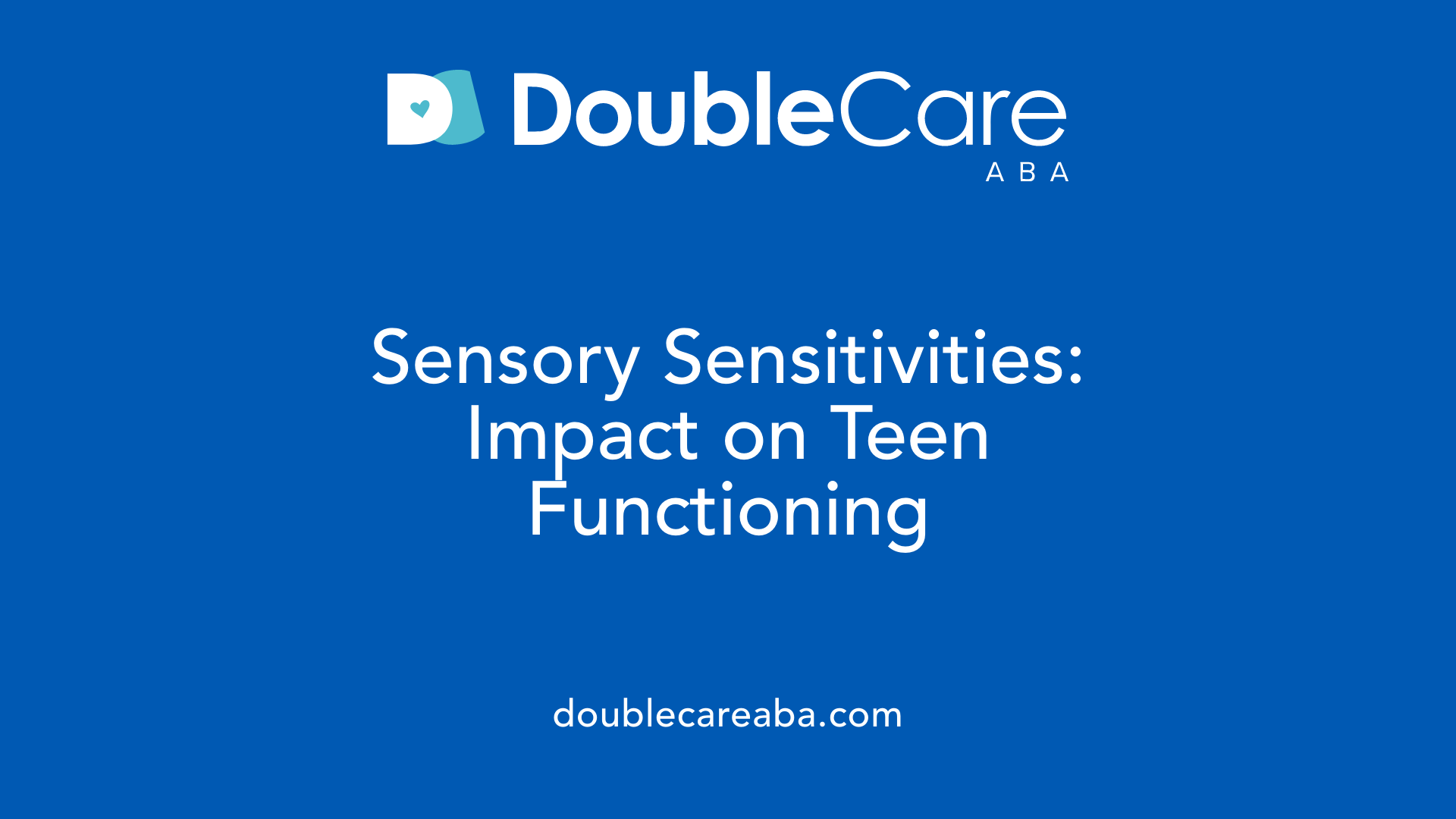
What are over- and under-responsiveness to sensory stimuli in teens?
Teens with autism spectrum disorder (ASD) often experience sensory sensitivities that manifest as either over-responsiveness or under-responsiveness to sensory input. Over-responsiveness means that stimuli such as loud sounds, bright lights, or certain textures can feel overwhelming or even painful. Under-responsiveness involves reduced awareness of sensory inputs, which might lead a teen to seek intense sensations or miss safety cues.
What sensory triggers are common for teens with ASD?
Common sensory triggers include loud noises (e.g., school bells, crowded hallways), fluorescent lighting, certain clothing fabrics, or the texture of food. These triggers vary by individual; some teens may be particularly sensitive to tactile sensations, while others may struggle with auditory or visual inputs.
How do sensory sensitivities interfere with daily activities?
Sensory challenges can significantly impact a teen's ability to function in daily life. For example, a noisy classroom environment may cause distraction or distress, leading to difficulty focusing or participating. Sensory overload may trigger avoidance behaviors, meltdowns, or shutdowns, which interfere with school attendance, social interactions, and self-care tasks.
What is the relationship between sensory sensitivities and emotional regulation?
Sensory sensitivities often contribute to difficulties in regulating emotions. When teens are overwhelmed by unexpected or intense sensory stimuli, they may experience heightened anxiety, frustration, or irritability. These strong emotional reactions can result in behavioral outbursts or withdrawal, making it harder for teens to manage social and academic demands.
How can sensory integration approaches help?
Sensory integration therapy aims to help teens better process and respond to sensory information. Occupational therapists often use strategies including sensory diets—planned sensory activities customized to an individual's needs—to improve tolerance to stimuli and support emotional regulation. These interventions can help teens increase comfort in daily environments and reduce behaviors triggered by sensory overload.
Supporting Teens with Autism: Communication and Social Skills Therapies
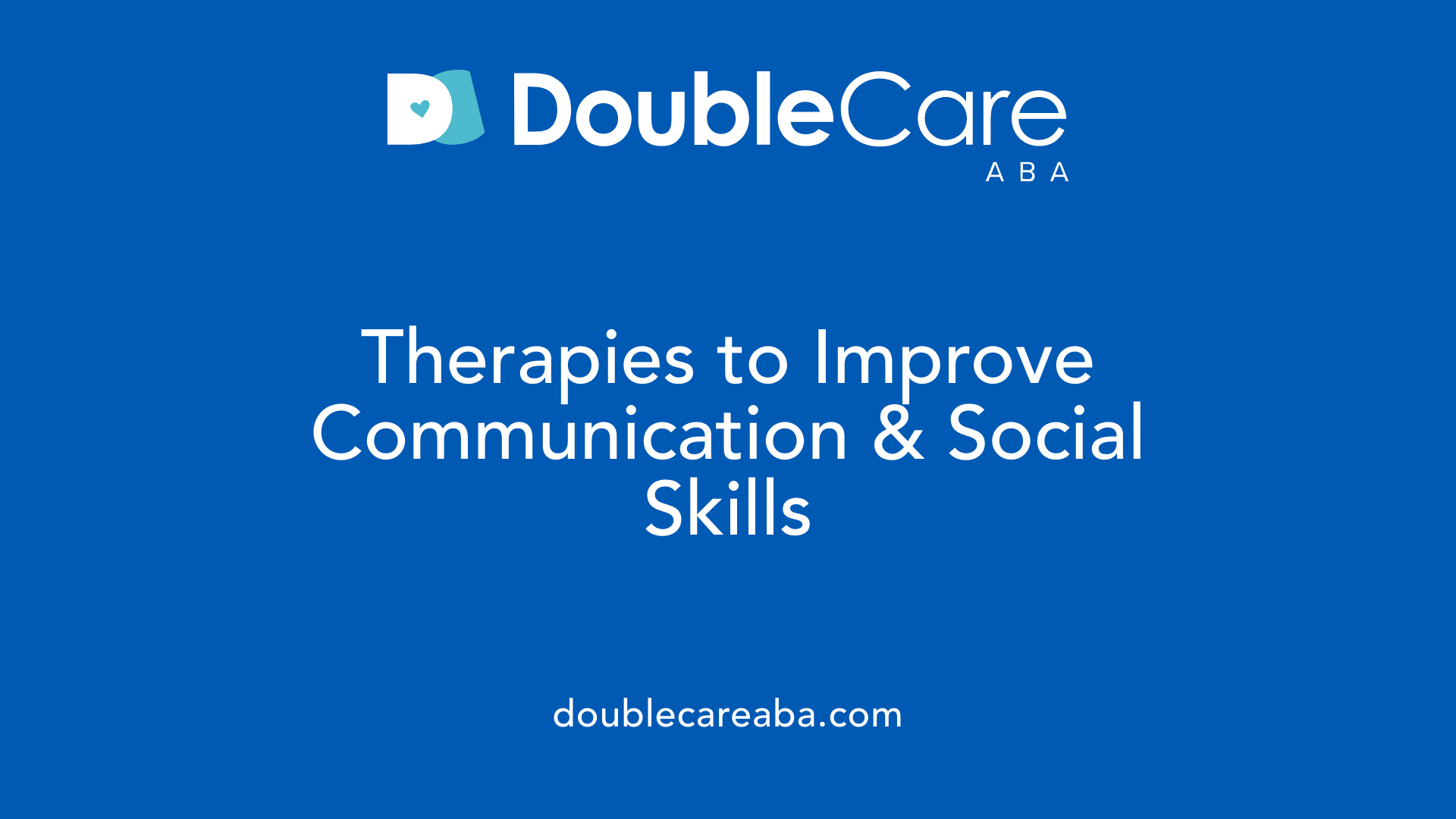
How Does Speech-Language Therapy Benefit Teens with Autism?
Speech-language therapy provides essential support by helping teenagers on the autism spectrum develop practical communication techniques. Therapists focus on improving clarity in expressing thoughts and emotions, which can be challenging due to difficulties in social communication typical of ASD.
What Practical Communication Strategies Are Taught?
Teens learn skills such as interpreting nonverbal cues, using appropriate tone of voice, and initiating conversations. This hands-on guidance assists them in engaging more effectively with peers and adults, making social exchanges more meaningful and less stressful.
How Is Self-Advocacy Developed in Teens?
Therapists and educators work with teens to build self-awareness and confidence, empowering them to express their needs and preferences clearly. This fosters greater independence and control over social and educational environments, improving quality of life.
What Role Do Social Skills Groups and Social Stories Play?
Social skills groups provide a safe environment for teens to practice interactions with peers, promoting understanding of social norms and cues. Social stories are personalized narratives that illustrate social situations, helping teens anticipate and manage real-life encounters with greater ease.
How Can These Therapies Enhance Emotional Resilience?
Therapeutic approaches often include coping strategies for managing anxiety and frustration, common in social scenarios due to communication difficulties. Building emotional resilience helps teens navigate social challenges more confidently and reduces feelings of isolation.
By integrating speech-language therapy, self-advocacy training, and structured social support, teens with autism gain crucial skills that promote successful communication and social interaction.
Comprehensive Intervention: Combining ABA with Developmental and Educational Approaches
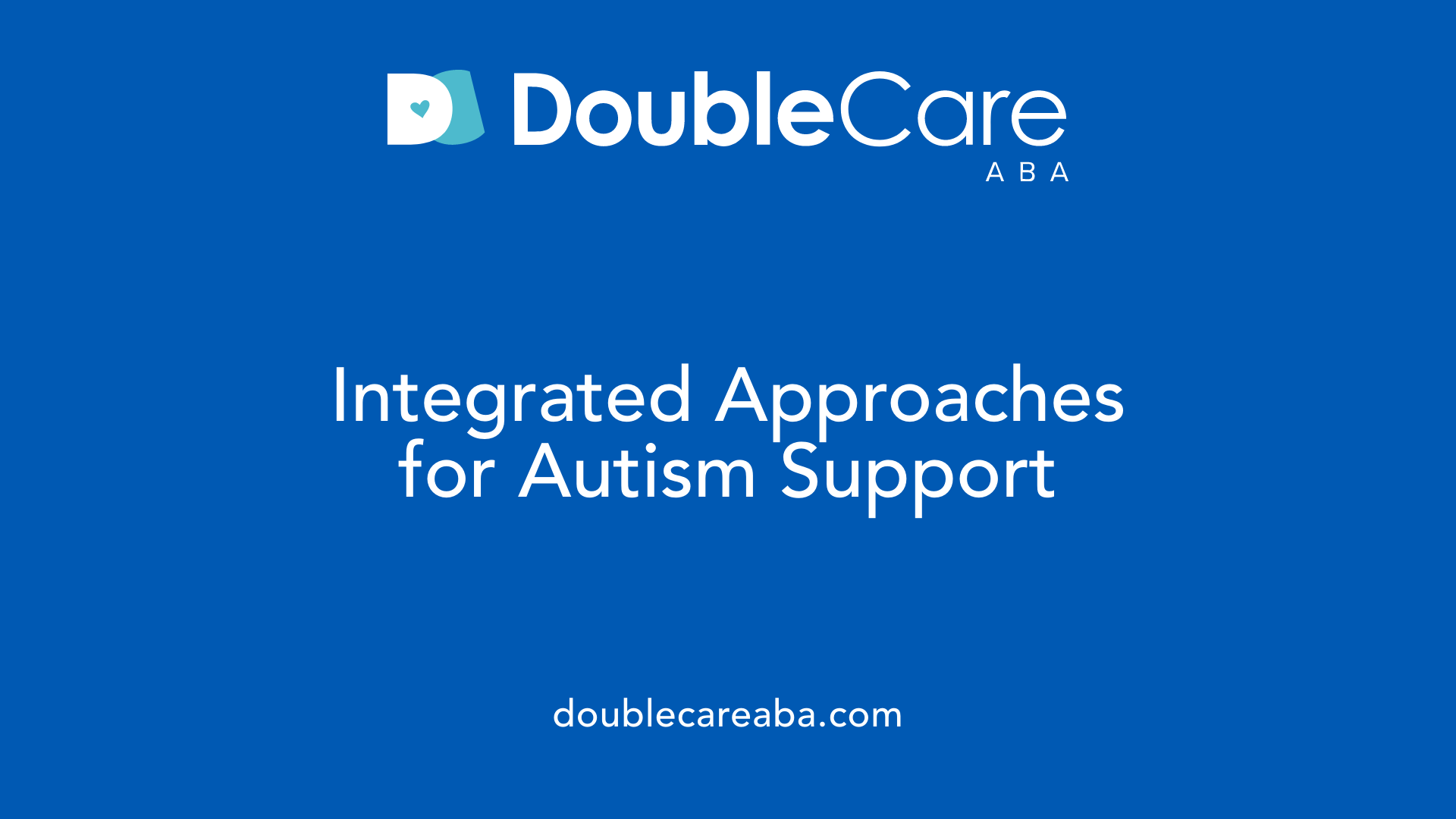
How do developmental therapies support individuals with autism?
Developmental therapies, including speech and occupational therapy, play a crucial role in helping autistic individuals develop essential skills. Speech and language therapy focuses on enhancing communication abilities, facilitating better social interactions, and supporting self-advocacy. Occupational therapy often targets daily living skills and may incorporate sensory integration techniques, which help manage sensory sensitivities common in autism.
What educational approaches benefit autistic learners?
Educational methods such as the TEACCH approach adapt classroom environments to support visual learning and establish consistent routines. This structure caters to the learning preferences of many autistic students, promoting better engagement and academic achievement.
What role do social-relational treatments play?
Social-relational treatments aim to improve social skills and emotional connections. Techniques like DIR/Floor Time foster developmental growth by following the child’s lead and encouraging emotional bonding. Social stories and social skills groups further enhance understanding of social cues and relationships.
Why is tailored, multidisciplinary support important?
Because autism presents with a diverse range of strengths and challenges, individualized intervention plans created by multidisciplinary teams—including behavioral therapists, speech and occupational therapists, educators, and healthcare providers—ensure comprehensive support. Such coordination addresses communication, behavior, sensory needs, and emotional regulation in an integrated way.
How do these combined interventions enhance adaptive functioning?
By integrating Applied Behavior Analysis (ABA) with developmental, educational, and social-relational therapies, interventions better target functional skills. This multimodal approach promotes improvements in communication, self-regulation, social participation, and independence, resulting in enhanced overall adaptive functioning and quality of life for adolescents with autism.
Supporting Teens on the Autism Spectrum: Pathways to Growth and Independence
Adolescence is a critical phase for individuals with autism spectrum disorder, marked by unique challenges in social communication, behavior, and emotional regulation. Recognizing the signs and symptoms specific to this age group enables earlier diagnosis and tailored interventions that can profoundly impact their development and quality of life. Applied Behavior Analysis (ABA) therapy remains a cornerstone treatment, offering structured, evidence-based strategies to foster essential skills and reduce behaviors that hinder independence. Alongside ABA, integrating developmental, educational, and social-relational therapies ensures a holistic approach addressing the diverse needs of autistic teens. With qualified professionals guiding individualized programs and a supportive environment that embraces their strengths and differences, teens on the spectrum can navigate adolescence with increased confidence, resilience, and social connection.
References
- Autism symptoms
- Autism Spectrum Disorder (ASD) Symptoms & Causes
- Treatment and Intervention for Autism Spectrum Disorder
- Applied Behavior Analysis in Children and Youth with Autism ...
- How Autism May Present at Different Ages
- Teen Autism Diagnosis: What to Expect
- Autism spectrum disorder - Symptoms and causes
- Applied Behavior Analysis (ABA)
- ABA and other therapies














